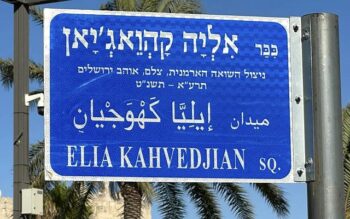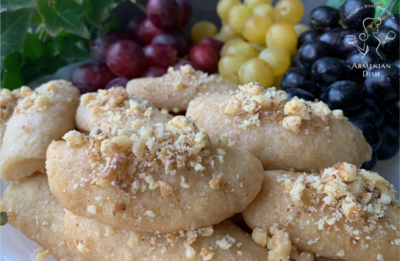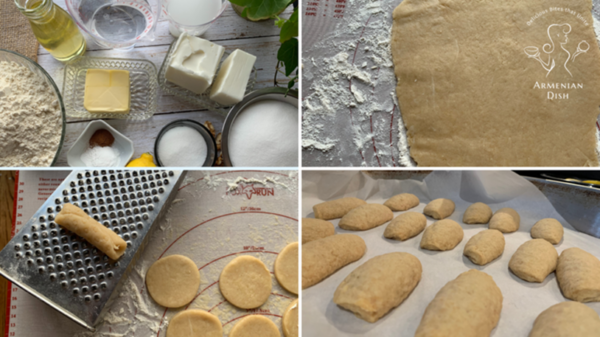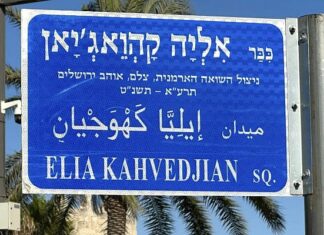TORONTO — Readers will love Sylvia Hagopian’s grandmother’s melt-in-your-mouth Armenian Greek Finikia cookies with the delicious and simple flavors of cinnamon and walnuts. Soaking the cookies in sugar syrup gives them a decadent, sweet taste. Finikia (or melomakarono) is an egg-shaped Greek dessert made mainly from flour, olive oil, and honey. Along with the kourabiedes, it is a traditional dessert often prepared during the Christmas season. When it comes to Greeks and Christmas, you can absolutely bet these decadent cookies will make an appearance. Some people use the two terms interchangeably depending where they are from, although there are differences. Finikia often contain semolina, or may be fried or stuffed as opposed to melomakarona.
“This recipe comes from my grandmother on my father’s side-Anahid Hagopian (née Kevorkian). My grandmother was born in 1915 in Shabin-Karahisar, which is historical western Armenia. She was orphaned due to the Armenian Genocide orchestrated by Ottoman Turks at the beginning of the 20th century,” says Sylvia, a resident of Toronto, and the founder and recipe creator at ArmenianDish.com.
“ArmenianDish.com is my journey to recreate my grandmother’s splendid dishes to share with my family and readers. Tangy yogurt soup with mint and mante dumplings, deliciously seasoned kebab skewers, generously meaty lahmajoun with squeezed lemon, crispy cheese boereg with tabulé and zesty eetch, kofte….just to name a few. I’m obsessed with food and food photography, and I know some of these dishes can be time consuming to make, but I try to break down recipe steps in a way that helps my readers learn from my trials and errors,” she adds.
“The highlands where my grandmother was born were one of the few locations where Armenians actively resisted the Armenian Genocide in an epic battle. This was also the birthplace of Andranik Ozanian, a legendary Armenian military commander, statesman and key figure of the Armenian national liberation movement,” she says. (Note: General Andranik was an Armenian military commander and statesman, the best known fedayi, and a key figure of the Armenian national liberation movement. He was born on February 25, 1865, in the town of Shabin-Karahisar (Şebinkarahisar), Sivas Vilayet, Ottoman Empire. From the late 19th century to the early 20th century, he was one of the main Armenian leaders of military efforts for the independence of Armenia. Armenian fedayis’ main goal was to defend Armenian villagers from persecution and at the same time, disrupt the Ottoman Empire’s activities in Armenian populated regions. Armenian volunteers fought during Hamidian Massacres, Sasun Resistance (1894), Zeitun Rebellion (1895-1896), Defense of Van, and Khanasor Expedition. They were the leaders and members of the Armenian national movement.)

“To save her life from the advancing Turkish forces, my grandmother was surrendered to an orphanage and then transferred along with thousands of other Armenian babies to orphanages in Greece where she grew up. The Near East Foundation supported my grandmother’s move to Cairo, Egypt when she was just 13, where she was welcomed into Haig and Marie Hovsepian’s family. She married my grandfather, Vartares Hagopian, also orphaned by the Armenian Genocide, in 1937 in Cairo.”
“I take great comfort in sharing this recipe with my readers since it is a reminder of my grandmother’s and our ancestors’ fight to live, and the Armenian blazing legacy of strength and survival. This is a very difficult time for Armenians around the world as we relive the trauma of our people’s genocide as Azerbaijan, supported by Turkey, invades our motherland-threatening our people’s existence through dehumanizing and barbaric acts of violence against our soldiers and the innocent villagers living near the border.”









